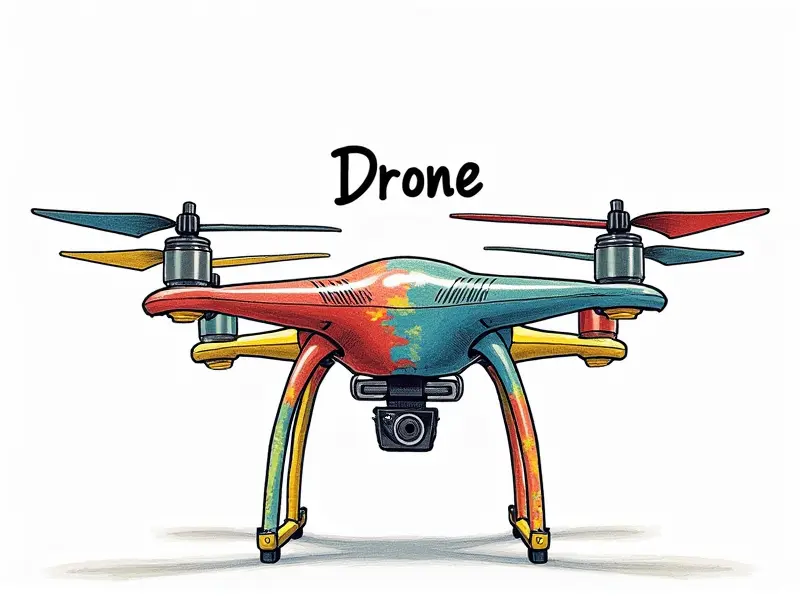What causes a drone to flip?

Why Does My Drone Keep Flipping?
If you're an avid drone enthusiast, the frustration of your drone suddenly flipping mid-flight is all too familiar. This phenomenon can be both alarming and puzzling, but understanding the causes behind it is crucial for maintaining a safe and enjoyable flying experience.
Common Reasons for Drone Flip-Outs
Drones can flip due to several factors:
- Misaligned Propellers: Proper propeller alignment is essential for balanced flight. Any misalignment can cause instability, leading to a sudden flip.
- Battery Imbalance: Uneven battery charge distribution across the drone's cells can affect its stability and performance.
- Firmware Issues: Outdated firmware or software bugs can interfere with flight control systems, causing erratic behavior.
Preventing Drones from Sudden Flips
To prevent your drone from flipping unexpectedly, follow these steps:
- Regular Maintenance: Perform routine checks on propellers and motors to ensure they are properly aligned and functioning.
- Battery Management: Use high-quality batteries and monitor their charge levels regularly. Ensure all battery cells are balanced before use.
- Firmware Updates: Keep your drone's firmware up-to-date with the latest patches from the manufacturer.
Understanding Drone Stability Problems
Stability issues in drones can stem from various sources, such as:
- Wind Conditions: Strong winds or gusts can disrupt flight stability and cause unexpected movements.
- Magnetic Interference: Nearby metal objects or electromagnetic fields can interfere with the drone's compass, leading to orientation errors.
Tips to Avoid Drone Roll Overs
To minimize the risk of your drone rolling over mid-flight:
- Proper Calibration: Calibrate your drone’s sensors before each flight to ensure accurate readings and optimal performance.
- Flight Environment: Choose open, flat areas for flying that are free from obstacles and strong winds.
Causes of Uncontrolled Drone Tumbles
Uncontrolled tumbles can occur due to:
- Overloading the Payload: Exceeding the drone’s weight capacity with additional equipment or payload can destabilize its flight.
- Sensor Malfunctions: Faulty sensors like accelerometers and gyroscopes can lead to inaccurate data, causing erratic behavior.
Troubleshooting Drone Flip Incidents
If your drone flips during a flight, consider these troubleshooting steps:
- Check Propeller Alignment: Ensure all propellers are correctly aligned and spinning in the right direction.
- Analyze Flight Data: Review logs from previous flights to identify patterns or anomalies that may indicate a specific issue.
Maintaining Proper Drone Balance Settings
A well-balanced drone is key to stable flight. Adjust the following settings:
- Centrifugal Force Compensation: Configure your drone’s software to account for centrifugal forces, especially during high-speed maneuvers.
- Moment of Inertia Settings: Fine-tune these settings based on the specific model and payload configuration of your drone.
Balancing Props: Key to Stable Flight
To achieve stable flight, balance your propellers properly. This involves:
- Weighing Propellers: Use a digital scale to weigh each propeller and ensure they are identical in weight.
- Dynamic Balancing: Conduct dynamic balancing tests by spinning the props on a dedicated tool to detect any imbalances.
Preventing RC Aircraft Orientation Errors
To prevent orientation errors, take these precautions:
- Magnetic Calibration: Calibrate your drone’s compass regularly in open areas away from magnetic interference sources.
- Visual Inertial Navigation System (VINS): Utilize VINS to enhance orientation accuracy, especially in GPS-denied environments.
Understanding Drone Roll and Pitch Problems
Roll and pitch issues can be caused by:
- Inconsistent Propeller Speeds: Ensure all propellers are rotating at the same speed to maintain balanced flight dynamics.
- Yaw Control Issues: Yaw misalignment or malfunctioning yaw motors can disrupt roll and pitch stability, leading to unintended flips.
Conclusion
Maintaining a stable and reliable drone requires careful attention to detail in setup, maintenance, and operation. By understanding the common causes of drone flips and implementing preventive measures such as regular calibration, proper battery management, and sensor checks, you can significantly reduce the risk of unexpected incidents. Always prioritize safety and adhere to manufacturer guidelines for optimal performance.

